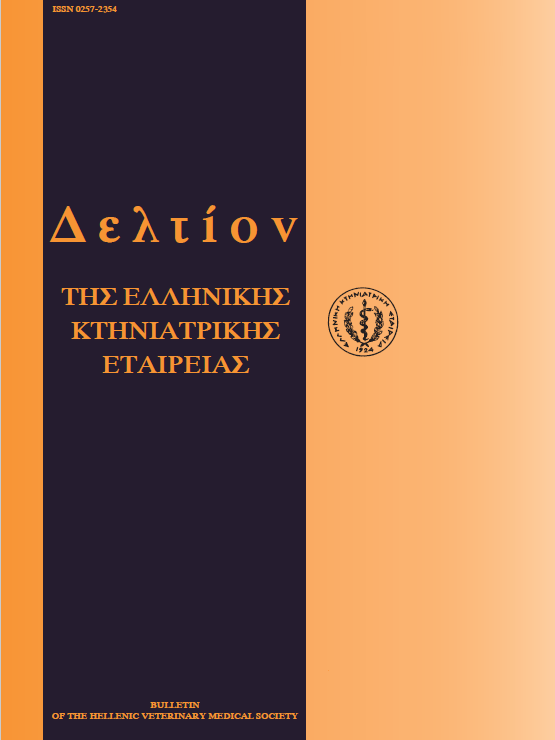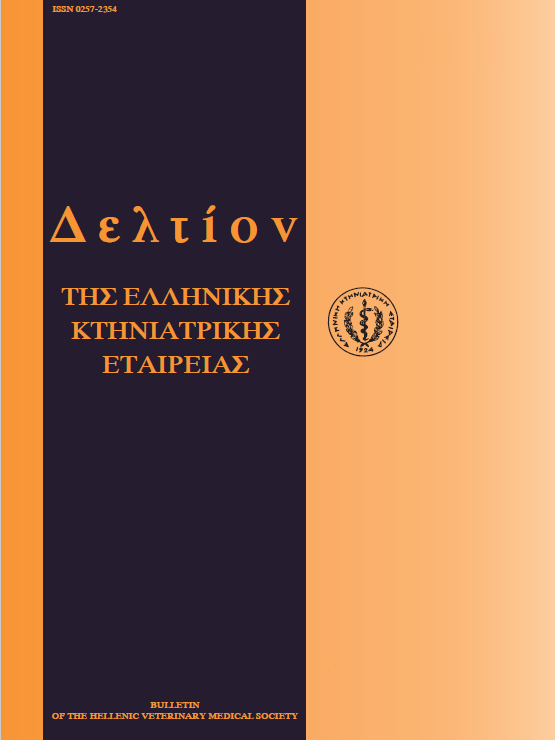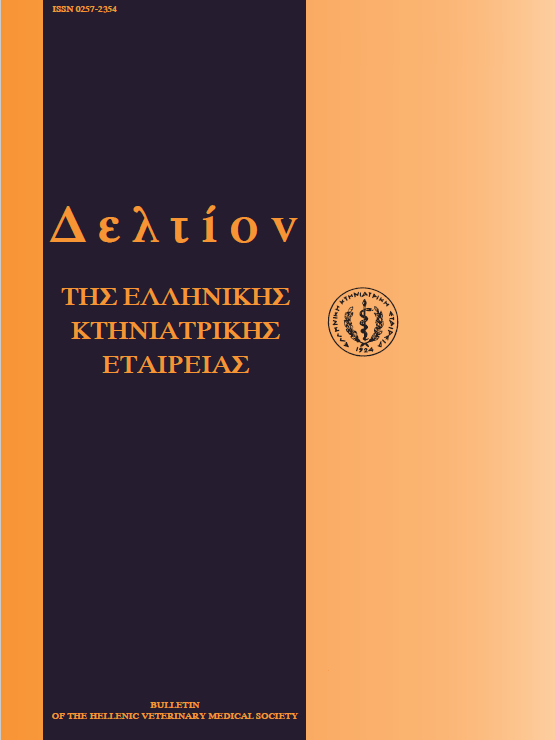Η χρήση των αυξητικών παραγόντων στη διατροφή του χοίρου: Προβλήματα και προοπτικές σε σχέση με τη δημοσία υγεία και τη χοιροτροφική παραγωγή

Περίληψη
Η χρήση διάφορων αντιμικροβιακών ουσιών ως αυξητικών παραγόντων, βρίσκει ευρεία εφαρμογή στη σύγχρονη, βιομηχανικού τύπου κτηνοτροφία, με σκοπό τη βελτίωση και την αύξηση της ζωικής παραγωγής. Με αφορμή το ζήτημα που προέκυψε αρχικά με την αβοπαρκίνη και τον τελευταίο χρόνο με τη σπιραμυκίνη, την τυλοζίνη, την ψευδαργυρούχο βακιτρακίνη και τη βιργινιαμυκίνη, η χρήση τους υπόκειται σε μία όλο και σκληρότερη κριτική. Διάφορες επιστημονικές οργανώσεις και φορείς έχουν πλέον ταχθεί υπέρ της απαγόρευσης της χρήσης όλων εκείνων των αντιμικροβιακών ουσιών που ενσωματώνονται ως προσθετικά στις ζωοτροφές. Οι αντιρρήσεις αυτές αφορούν στην πιθανή τοξικότητα διάφορων αυξητικών παραγόντων, στα αμφίβολα αποτελέσματα τους, ειδικά όταν χρησιμοποιούνται σε μονάδες εκτροφής με καλή κτηνιατρική διαχείριση, καθώς και στη χορήγηση τους χωρίς κτηνιατρική συνταγή. Επίσης, στην πιθανή ασυμβατότητα που έχουν με άλλες θεραπευτικές ουσίες, στον κίνδυνο να αφήνουν κατάλοιπα στα εδώδιμα ζωοκομικά προϊόντα, στην πιθανότητα εμφάνισης τοξίκωσης σε είδη παραγωγικών ή μη ζώων για τα οποία δεν προορίζονται, στην πιθανή χρησιμοποίηση τους -σε υψηλότερη δοσολογία- για τη θεραπεία νοσημάτων και κυρίως στον κίνδυνο της ανάπτυξης μικροβιοαντοχής από βακτήρια που είναι πιθανά υπεύθυνα επικίνδυνων λοιμωδών νοσημάτων για την υγεία του ανθρώπου.Σκοπός της εργασίας αυτής είναι να παρουσιάσει πλεονεκτήματα και τα μειονεκτήματα της χρήσης των αντιμικροβιακών ουσιών ως προσθετικών παραγόντων στη διατροφή, ειδικά των χοίρων, που μαζί με τα κρεοπαραγωγά ορνίθια αποτελούν τους κύριους κλάδους των παραγωγικών ζώων, όπου γίνεται η μεγαλύτερη χρήση τέτοιων φαρμακευτικών ουσιών. Τέλος, παρατίθενται κάποιες προτάσεις που αφορούν στη σωστή χρήση των αντιμικροβιακών αυξητικών παραγόντων, με ιδιαίτερη έμφαση στην ανάγκη για κτηνιατρικό έλεγχο όλων των αντιμικροβιακών ουσιών που χορηγούνται στα ζώα (απαραίτητη προϋπόθεση για τη χορήγηση τους η κτηνιατρική συνταγή).
Λεπτομέρειες άρθρου
- Πώς να δημιουργήσετε Αναφορές
-
TZIKA (Ε. Δ. ΤΖΗΚΑ) E. D., SBIRAKI (Α.Π. ΣΜΠΙΡΑΚΗ) A. P., KRITAS (Σ. Κ. ΚΡΗΤΑΣ) S. K., KOUTSOVITI - PAPADOPOULOU (Μ. ΚΟΥΤΣΟΒΙΤΗ-ΠΑΠΑΔΟΠΟΥΛΟΥ) M., & KYRIAKIS (Σ.K. ΚΥΡΙΑΚΗΣ) S. C. (2018). Η χρήση των αυξητικών παραγόντων στη διατροφή του χοίρου: Προβλήματα και προοπτικές σε σχέση με τη δημοσία υγεία και τη χοιροτροφική παραγωγή. Περιοδικό της Ελληνικής Κτηνιατρικής Εταιρείας, 51(2), 89–99. https://doi.org/10.12681/jhvms.15664
- Τεύχος
- Τόμ. 51 Αρ. 2 (2000)
- Ενότητα
- Review Articles

Αυτή η εργασία είναι αδειοδοτημένη υπό το CC Αναφορά Δημιουργού – Μη Εμπορική Χρήση 4.0.
Οι συγγραφείς των άρθρων που δημοσιεύονται στο περιοδικό διατηρούν τα δικαιώματα πνευματικής ιδιοκτησίας επί των άρθρων τους, δίνοντας στο περιοδικό το δικαίωμα της πρώτης δημοσίευσης.
Άρθρα που δημοσιεύονται στο περιοδικό διατίθενται με άδεια Creative Commons 4.0 Non Commercial και σύμφωνα με την άδεια μπορούν να χρησιμοποιούνται ελεύθερα, με αναφορά στο/στη συγγραφέα και στην πρώτη δημοσίευση για μη κερδοσκοπικούς σκοπούς.
Οι συγγραφείς μπορούν να καταθέσουν το άρθρο σε ιδρυματικό ή άλλο αποθετήριο ή/και να το δημοσιεύσουν σε άλλη έκδοση, με υποχρεωτική την αναφορά πρώτης δημοσίευσης στο J Hellenic Vet Med Soc
Οι συγγραφείς ενθαρρύνονται να καταθέσουν σε αποθετήριο ή να δημοσιεύσουν την εργασία τους στο διαδίκτυο πριν ή κατά τη διαδικασία υποβολής και αξιολόγησής της.




